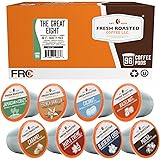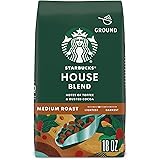In a world where coffee culture thrives, countless individuals are spending a significant portion of their discretionary income on cafe-bought beverages; some reports indicate that a regular coffee habit can amount to hundreds of dollars annually. For those who adore the creamy indulgence of a cappuccino but wish to avoid the expense or the need for an elaborate espresso machine, a surprisingly simple solution exists. The accompanying video demonstrates how a delightful cappuccino can be created at home using just four basic ingredients, offering a fantastic alternative to professional baristas’ creations.
This ingenious method allows for the enjoyment of café-quality beverages, all from the comfort of your own kitchen. Imagine being able to craft a frothy, rich cappuccino whenever the mood strikes, without any specialized equipment. This blog post will delve deeper into the techniques and scientific principles involved, ensuring your homemade cappuccino is consistently perfect. Furthermore, we will explore the nuances of ingredient selection and optimal preparation, enhancing the experience for every coffee enthusiast.
Crafting Your Instant Cappuccino Foam: The Core of Homemade Deliciousness
The foundation of any great cappuccino is its distinctive foam, and for a homemade version, this is achieved through a remarkably straightforward process. As shown in the video, merely three essential components are combined to create this luxurious topping: instant coffee, granulated sugar, and water. These are typically used in equal proportions, such as the one-third cup measurements highlighted, ensuring a balanced flavor and optimal consistency. Using precise measurements is quite important for consistent results, which ultimately contributes to a superior final product.
The choice of instant coffee can subtly influence the overall flavor profile of your cappuccino. Varieties from brands like Nescafé are often favored for their consistent quality and robust flavor, providing a strong coffee base for the foam. Sugar is not only for sweetness but also plays a crucial role in stabilizing the foam, preventing it from collapsing too quickly. Water, when combined with these ingredients, facilitates the dissolving process and aids in achieving the desired airy texture. Careful consideration of these ingredients ensures a rich and flavorful outcome.
The Art and Science of Whipping Coffee
Transforming these three simple ingredients into a luscious, stiff foam is where the magic truly happens. The process involves vigorous whisking, which incorporates air into the mixture, creating a stable emulsion. This technique is similar to how meringue is made, where air bubbles are trapped within a sugar and protein matrix, providing structure. An electric hand whisk significantly expedites this process, transforming the liquid mixture into a thick, pale, and incredibly fluffy foam within approximately 15 minutes.
However, an electric whisk is certainly not a prerequisite for success; a hand whisk, a fork, or even a traditional Indian “dal ghotni” can be effectively utilized. While manual methods may require more time and effort, the end result can be equally satisfying, albeit perhaps taking up to 25-30 minutes of continuous whisking. The visual transformation, from a dark, liquid state to a light brown, stiff-peaked foam, is a clear indicator of proper aeration. Folding the mixture periodically during whisking, as suggested, helps ensure even aeration and prevents dense spots, contributing to a more uniform and stable foam.
Preparing the Perfect Milk Base for Your Cappuccino
With the coffee foam expertly prepared, attention turns to the milk, which forms the warm, creamy base of your cappuccino. The video correctly emphasizes a critical point: the milk should be thoroughly heated but not boiled. Boiling milk can alter its chemical structure, leading to a diminished flavor and a texture that may not integrate as smoothly with the whipped coffee foam. Optimal milk temperature is generally considered to be between 150-160°F (65-70°C), which is hot enough to enjoy but not scalding.
Imagine if boiled milk were used; the cappuccino’s delicate balance of flavors might be compromised, and the frothy texture could be lost. Furthermore, the selection of milk type can influence the final taste and mouthfeel. Whole milk typically produces the richest and creamiest cappuccino due to its fat content, while skim milk offers a lighter option. Plant-based milks, such as oat or almond, can also be used, though their frothing capabilities may vary, requiring slight adjustments to achieve a similar consistency.
Assembling Your No-Machine Cappuccino: A Step-by-Step Guide
Once both the whipped coffee foam and the heated milk are ready, the assembly process is quite swift and visually appealing. Begin by spooning two teaspoons of the prepared coffee foam into your chosen serving cup. This initial layer establishes the coffee’s presence at the bottom of the drink. Then, hot milk is gently poured into the cup, ensuring not to fill it completely, as space is reserved for the crowning layer of foam. The milk should be added slowly, allowing it to integrate with the initial coffee foam.
Finally, a generous dollop of the remaining coffee foam is carefully placed on top of the milk, creating the signature frothy cap that defines a cappuccino. This top layer can be artfully swirled or textured for an enhanced visual appeal. To further elevate the presentation and flavor, a dusting of cocoa powder or a sprinkle of instant coffee powder can be added. This final touch provides a subtle bitterness or chocolatey note, complementing the sweetness of the foam and the creaminess of the milk.
Tips for Storage and Creative Variations
One of the most practical aspects of this homemade cappuccino method is the ability to prepare the coffee foam in advance. The whipped coffee mixture can be stored in an airtight container in the refrigerator for up to three days, maintaining its stiff consistency. This allows for quick cappuccino preparation on demand, making it an excellent option for busy mornings or unexpected guests. Properly stored foam ensures that a luxurious coffee experience is always within reach.
Beyond the basic recipe, numerous variations can be explored to customize your homemade cappuccino. For example, a dash of vanilla extract or a pinch of cinnamon could be added to the coffee foam mixture before whipping, introducing aromatic complexities. Imagine infusing the milk with a hint of cardamom or a drop of almond essence for a uniquely flavored beverage. Moreover, for those who prefer iced beverages, the coffee foam can also be spooned over cold milk and ice, creating a refreshing iced cappuccino. These creative additions allow for endless experimentation and personal preference.
Embracing the Joy of Homemade Cappuccino Without a Machine
The simplicity and cost-effectiveness of creating a cappuccino at home, without the need for expensive machinery, is a truly appealing prospect. This method empowers coffee lovers to enjoy their favorite café-style drink anytime. The entire process, from preparing the ingredients to the final assembly, offers a rewarding culinary experience. Furthermore, the ability to store the coffee foam for several days ensures that a delightful cappuccino is always just minutes away.
Whether it is a special treat or a daily indulgence, mastering the art of the no-machine cappuccino provides immense satisfaction. The rich flavor, the velvety texture, and the impressive presentation of this homemade beverage are sure to impress. So, embrace this accessible technique and transform your home into your very own coffee haven, continuously creating perfect cups of cappuccino at home without a machine.







